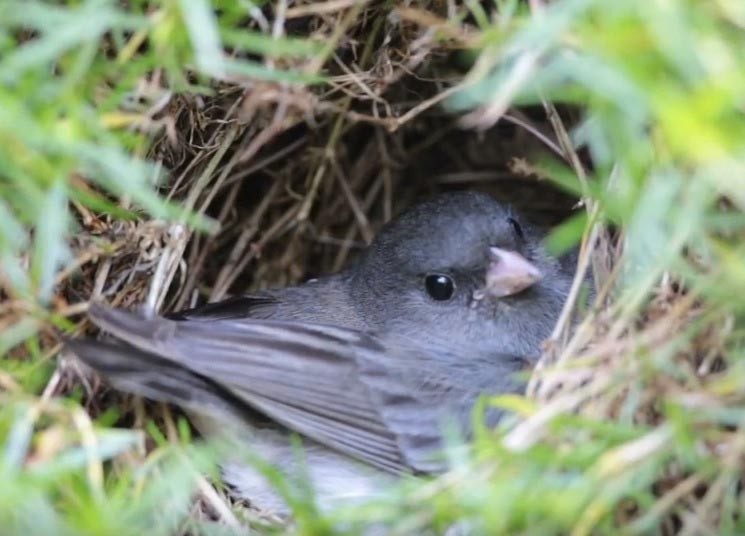Recently I found something odd in the grass, and so of course I took it inside to examine under the kitchen microscope. I thought it was some sort of moth cocoon – perhaps a candidate for the next family hatch and release project. It was a couple centimeters long, roughly tear shaped, and it left faint white powder on my fingertips.
It was bird poop. Specifically, what I had found was a fecal sac – the tidily packaged waste of a baby bird.
Many species produce these sacs, which are essentially dry mucus baggies around the other stuff. Parents may carry them away from the nest, or – brace yourself – ingest them, but either way, it’s an adaptation that promotes sanitation and reduces smells that could alert predators. (A fun side note: according to a blog post by the science writers at Annenberg Learner’s Journey North, grackles naturally drop these sacs over water, so “the flowing water would carry the droppings far away.” Which is why, when you encounter unwelcome additions to your swimming pool, it’s wrong to attribute unfriendly motives.)
What I have discovered is that these summer objects are a bit like invasive plants; once you learn to identify them, you see them everywhere. Or perhaps I’ve at long last discovered my one special gift. Whatever the reason, little white sac discovery has been an ongoing theme, and a reminder of the many new lives hidden up there in the old maples and apple trees around our house.
And on the ground. Here’s a fun video that my husband took recently at a neighbor’s home of a dark-eyed junco attending to all aspects of the chicks’ digestive endeavors. It’s a remarkably efficient process.



Discussion *